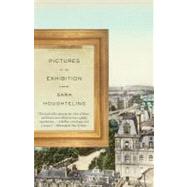Set in a Paris darkened by World War II, Sara Houghteling's sweeping and sensuous debut novel tells the story of a son's quest to recover his family's lost masterpieces, looted by the Nazis during the occupation.
Born to an art dealer and his pianist wife, Max Berenzon is forbidden from entering the family business for reasons he cannot understand. He reluctantly attends medical school, reserving his true passion for his father's beautiful and brilliant gallery assistant, Rose Clément.
When Paris falls to the Nazis, the Berenzons survive in hiding. They return in 1944 to find that their priceless collection has vanished: gone are the Matisses, the Picassos, and a singular Manet of mysterious importance. Madly driven to recover his father's paintings, Max navigates a torn city of corrupt art dealers, black marketers, Résistants, and collaborators. His quest will reveal the tragic disappearance of his closest friend, the heroism of his lost love, and the truth behind a devastating family secret.
Written with tense drama and a historian's eye for detail, Houghteling's novel draws on the real-life stories of France's preeminent art-dealing familes and the forgotten biography of the only French woman to work as a double agent inside the Nazis' looted art stronghold.
Pictures at an Exhibition conjures the vanished collections, the lives of the artists and their dealers, the exquisite romance, and the shattering loss of a singular era. It is a work of astonishing ambition and beauty from an immensely gifted new novelist.
“Engrossing reading. Miss Houghteling has done her research well, and her descriptions of real paintings and places have depth and beauty.” -The Washington Times
“An impressive debut . . . Pictures at an Exhibition is both well-prepared and well-written, it grabs you and drags you along as it creeps through shady backalleys looking for black-market art dealers, and it stuns you just as it stuns Max Berenzon when some disturbing revelations are made.” -Sacramento Book Review
“Compelling and important.” -The Jerusalem Post
“Remarkable. . . . A refreshingly understated work that offers a subtle but powerful exploration of loss, and of the pain and havoc left in its wake.” -Haaretz








